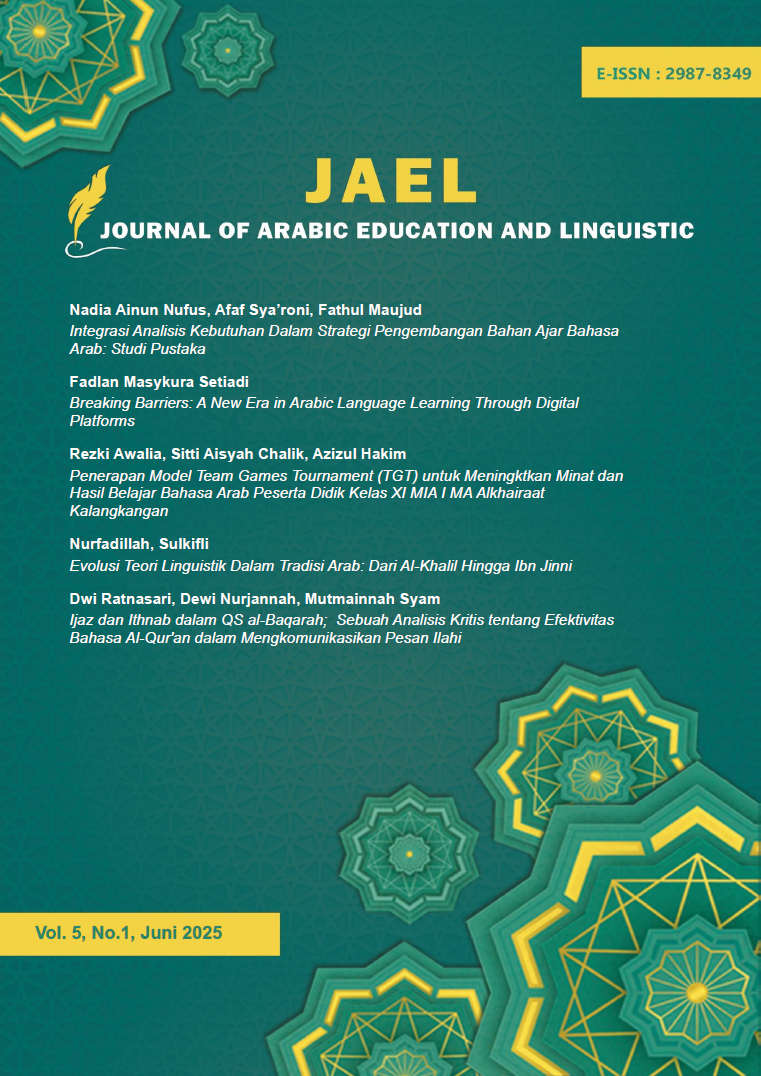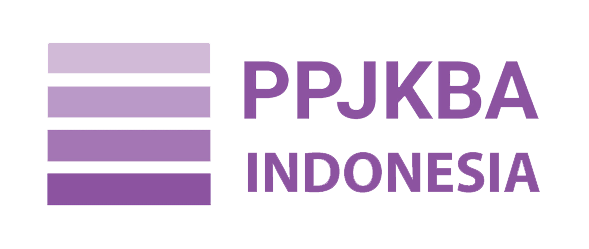Ijaz dan Ithnab dalam QS al-Baqarah
Sebuah Analisis Kritis tentang Efektivitas Bahasa Al-Qur'an dalam Mengkomunikasikan Pesan Ilahi
DOI:
https://doi.org/10.24252/jael.v5i1.44876Keywords:
Uslub Ijaz and Ithnab; QS. Al-BaqarahAbstract
Al-ijaz and al-itnab are among the language styles found in the Qur'an al-Karim. This language style has a beautiful, special and distinct value equal to its position as the word of Allah SWT. This article aims to reveal the secrets behind these two language styles, focusing on surah Al-Baqarah. This study is a qualitative study that uses a descriptive and comparative approach. Based on sampling methods, this article selects 16 verses from surah Al Baqarah as samples to represent each language style discussed. Everything is explained with the aim of knowing the secrets and beauty of semantics. The research results found examples that contain very special semantics and goals, both implicit and explicit. Apart from that, it tries to make a deep impression on the human soul and heart. The secret to the beauty of the language contained in surah Al-Baqarah is: In terms of the style of the ijaz language, it contains verses that have a lot of meaning in a few pronunciations. And in terms of the style of ithnab, it contains verses that have little meaning in many pronunciations.
References
‘Alī al-Jārim wa Muṣṭafā Amīn. al-Balāghah al-Wāḍiḥah: al-Ma‘ānī wa al-Bayān wa al-Badī‘. Landan: Dār al-Ma‘ārif, 1999.
Aḥmad Maṭlūb. Asālīb Balāghiyyah: al-Faṣāḥah wa al-Balāghah wa al-Ma‘ānī. Ṭab‘ah ūlā. al-Kuwayt: Jāmi‘at Baghdād, 1980.
Al-Azmi, S. 2020. The Inimitability of the Qur’an: A Contemporary Linguistic Analysis. Kuala Lumpur: IIUM Press.
Ali Al-Jarim Dan Musthofa Amin. Terj. Mujiono Nurkholis dkk, Terjemahan Al-Balaghotul Al-Wadhihaha, (Bandung: Sinar Baru Algesindo Offset Bandung 2010.
Al-Khaṭīb al-Qazwīnī. al-Īḍāḥ fī ‘Ulūm al-Balāghah. Bayrūt: Dār al-Kutub al-‘Ilmiyyah, 2001.
Al-Qur’ān al-Karīm.
Bahā’ al-Dīn al-Subkī. ‘Arūs al-Afrāḥ fī Sharḥ Talkhīṣ al-Miftāḥ. Bayrūt: al-Maktabah al-‘Aṣriyyah, 2001.
Hassan, R. 2019. “Balaghah as a Tool of Qur’anic Hermeneutics in the Modern Context.” Journal of Qur’anic Studies 21 (2): 45–62.
Ḥifnī Nāṣif Bīk wa al-Aṣḥāb. Kitāb Qawā‘id al-Lughah al-‘Arabiyyah li-Talāmīdh al-Madāris al-Thanawiyyah. al-Qāhirah: Wizārat al-Ma‘ārif al-‘Umūmiyyah, 1995.
Ibrahim, M. 2022. Classical Rhetoric and Qur’anic Exegesis: Studies in Ilmu Ma‘ani. Cairo: Dar al-Fikr.
Rahman, F. 2021. “Science and Revelation: The Interaction of Knowledge and Qur’anic Exegesis.” Islamic Studies Review 29 (3): 112–130.
Shukri, A. 2023. “Ijaz and Ithnab in Surah al-Baqarah: A Rhetorical Analysis.” International Journal of Qur’anic Research 15 (1): 77–94








